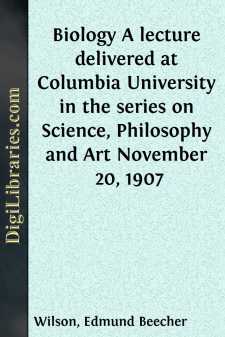Categories
- Antiques & Collectibles 13
- Architecture 36
- Art 48
- Bibles 22
- Biography & Autobiography 813
- Body, Mind & Spirit 142
- Business & Economics 28
- Children's Books 15
- Children's Fiction 12
- Computers 4
- Cooking 94
- Crafts & Hobbies 4
- Drama 346
- Education 46
- Family & Relationships 57
- Fiction 11828
- Games 19
- Gardening 17
- Health & Fitness 34
- History 1377
- House & Home 1
- Humor 147
- Juvenile Fiction 1873
- Juvenile Nonfiction 202
- Language Arts & Disciplines 88
- Law 16
- Literary Collections 686
- Literary Criticism 179
- Mathematics 13
- Medical 41
- Music 40
- Nature 179
- Non-Classifiable 1768
- Performing Arts 7
- Periodicals 1453
- Philosophy 64
- Photography 2
- Poetry 896
- Political Science 203
- Psychology 42
- Reference 154
- Religion 513
- Science 126
- Self-Help 84
- Social Science 81
- Sports & Recreation 34
- Study Aids 3
- Technology & Engineering 59
- Transportation 23
- Travel 463
- True Crime 29
The Biology, Physiology and Sociology of Reproduction Also Sexual Hygiene with Special Reference to the Male
Categories:
Description:
Excerpt
I. GENERAL ACTIVITIES OF LIVING ORGANISMS.
The casual observer, even if he watches thoughtfully the various activities of plants and animals, would hardly believe these activities capable of classification into two general classes. He notes the germination of the plant seed and its early growth, step by step approaching a stage of maturity; it blossoms, produces seed, and if it is an annual plant, withers and dies. If it is a perennial plant its leaves only, wither and die at the approach of winter, the plant passing into a resting stage from which it awakes the following spring to repeat again its annual cycle.
If he observes an animal he finds that it similarly develops to a stage of maturity, reproduces its kind, withers and dies; but incident to these general activities he notes numerous others that seem to have no relation to the activity of the plant. He sees men tilling the fields, felling the forests, building houses, factories and railroads; he sees them build hospitals, colleges and churches. Is it possible to group all of these activities of plants and animals into two general groups? A more critical view of these activities makes it evident that they are all directed either to the maintenance and protection of the individual, or the maintenance and protection of the race. Those directed towards the maintenance of self are called egoistic activities, while those directed to the maintenance of the race are called phyletic activities.
The Egoistic Activities.
The term egoistic implies that the effort is directed towards the ego or self, and includes all of those activities directed to the support, protection, defense and development of oneself. As illustrated in the plant organism, the taking of nourishment from the air and soil, the development of the stem, branches, roots and leaves, are egoistic activities. In the animal—we may take, for example, man—the egoistic activities begin with the drawing of nourishment from the mother's breast and include all those activities of early childhood usually called play, the real significance of which is to develop the neuro-muscular system and the special senses, to that condition of alertness and strength that will make the growing individual self-supporting. A very large part of the activities of the self-supporting human subject are directed towards the earning of his daily bread, and of clothing and shelter. The activities of the school and college period, devoted, as they are, almost exclusively to the development of the youth's powers, intellectual or physical, are also egoistic. Even the pursuit of pleasure and of sense gratification on the part of the individual belongs to this same group of activities.
The Phyletic Activities.
As the etymology of the term suggests, these activities are devoted to the propagation, maintenance and protection of the race.
a. Reproduction.—The most fundamental one of the activities for the maintenance of the race is reproduction. Every living organism, whether plant or animal, possesses the power to reproduce its kind....










